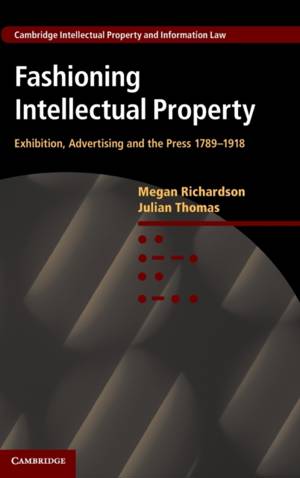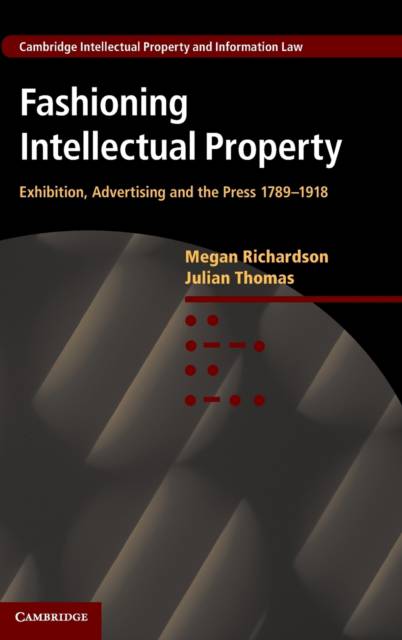
- Afhalen na 1 uur in een winkel met voorraad
- Gratis thuislevering in België vanaf € 30
- Ruim aanbod met 7 miljoen producten
- Afhalen na 1 uur in een winkel met voorraad
- Gratis thuislevering in België vanaf € 30
- Ruim aanbod met 7 miljoen producten
Zoeken
Fashioning Intellectual Property
Exhibition, Advertising and the Press, 1789-1918
Megan Richardson, Julian Thomas
€ 123,95
+ 247 punten
Omschrijving
Vigorous public debate about intellectual property has a long history. In this assessment of the shifting relationships between the law and the economic, social and cultural sources of creativity and innovation during the long-nineteenth century, Megan Richardson and Julian Thomas examine the 'fashioning' of the law by focusing on emblematic cases, key legislative changes and broader debates. Along the way, the authors highlight how, in 'the age of journalism', the press shaped, and was shaped by, the idea of intellectual property as a protective crucible for improvements in knowledge and progress in the arts and sciences. The engagement in our own time between intellectual property and the creative industries remains volatile and unsettled. As the authors conclude, the fresh opportunities for artistic diversity, expression and communication offered by new media could see the place of intellectual property in the scheme of law being reinvented once again.
Specificaties
Betrokkenen
- Auteur(s):
- Uitgeverij:
Inhoud
- Aantal bladzijden:
- 204
- Taal:
- Engels
- Reeks:
- Reeksnummer:
- nr. 14
Eigenschappen
- Productcode (EAN):
- 9780521767569
- Verschijningsdatum:
- 20/02/2012
- Uitvoering:
- Hardcover
- Formaat:
- Genaaid
- Afmetingen:
- 155 mm x 229 mm
- Gewicht:
- 430 g

Alleen bij Standaard Boekhandel
+ 247 punten op je klantenkaart van Standaard Boekhandel
Beoordelingen
We publiceren alleen reviews die voldoen aan de voorwaarden voor reviews. Bekijk onze voorwaarden voor reviews.











